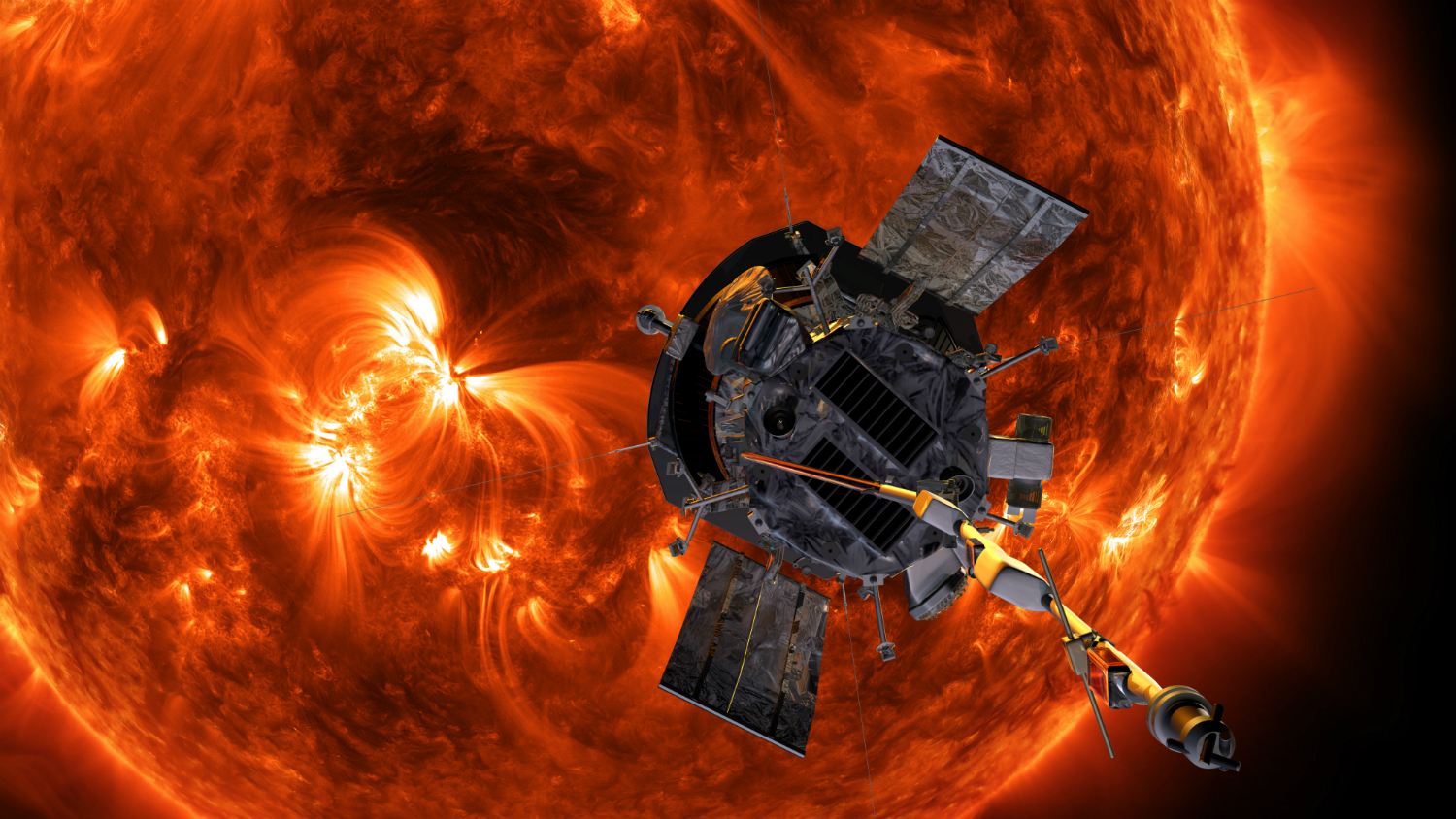NASA's Parker Solar Probe smashes record for fastest human-made object
NASA's Parker Solar Probe has reached a record-breaking speed as it gets a gravitational assist from Venus to fall closer to the sun's scorching surface.

The NASA Parker Solar Probe has become the fastest human-made object ever recorded — again.
On Sept. 27, the probe reached a blistering 394,736 mph/ (635,266 km/h) as it swooped close to the sun's surface, thanks to a little gravity assistance from a close flyby of Venus on Aug. 21. . With this blistering approach to the sun, the probe smashed its own previous speed record of 364,660 mph (586,863 kmh), set in Nov. 2021. At the same time, the probe set a new distance record, swooping within just 4.51 million miles (7.26 million km) of the solar surface — closer than any spacecraft has ever orbited before, according to NASA.
The Venus flybys are a crucial element of the probe's attempt to study the sun's scorching surface. As the probe zooms by Venus, the planet absorbs some of Parker’s orbital energy, allowing it to get closer to the sun. The probe has one more flyby planned; its closest approach to the sun in late 2024 is predicted to be just 3.83 million miles (6.16 million km) from the surface. The probe will likely reach even greater speeds on its final trip around the sun, firmly solidifying its reputation as the fastest human-made object ever.
Related: How ordinary spacecraft sensors could improve our understanding of space weather
The Parker Solar Space Probe, launched in Aug. 2018, is on a seven-year mission to understand the sun's corona, or the outermost layer of the sun's atmosphere. Understanding how heat moves through the corona, how plasma and magnetic fields change on the sun's surface, and how that powers phenomena such as solar wind will help scientists better predict space weather, according to NASA.
Get the Space.com Newsletter
Breaking space news, the latest updates on rocket launches, skywatching events and more!
Join our Space Forums to keep talking space on the latest missions, night sky and more! And if you have a news tip, correction or comment, let us know at: community@space.com.

Tia is the assistant managing editor and was previously a senior writer for Live Science, a Space.com sister site. Her work has appeared in Scientific American, Wired.com and other outlets. She holds a master's degree in bioengineering from the University of Washington, a graduate certificate in science writing from UC Santa Cruz and a bachelor's degree in mechanical engineering from the University of Texas at Austin. Tia was part of a team at the Milwaukee Journal Sentinel that published the Empty Cradles series on preterm births, which won multiple awards, including the 2012 Casey Medal for Meritorious Journalism.










